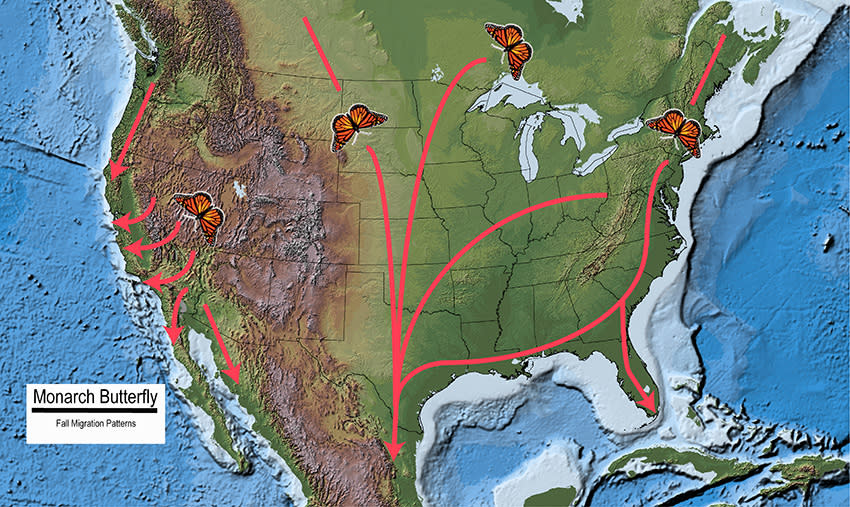Number of monarch butterflies migrating to Mexico for winter is on the decline
Story at a glance
Eastern monarch butterflies once migrated to a wintering site in Mexico that spanned 45 acres of forest.
Their population during the winter months has been on the decline for the last 25 years.
Most recently, the presence of monarch butterflies in Mexico has dropped 22 percent in only one year, from 7.02 acres to 5.46 acres.
CHICOPEE, Mass. (WWLP) – A new report shows a sharp decline in monarch butterflies migrating to Mexico as well as a loss of habitat in the forests they spend their winter each year.
Eastern monarch butterflies once migrated to a wintering site in Mexico that spanned 45 acres of forest, according to the World Wildlife Fund (WWF). But their population during the winter months has been on the decline for the last 25 years. Most recently, the presence of monarch butterflies in Mexico has dropped 22 percent in only one year, from 7.02 acres to 5.46 acres, according to recent reports cited by the WWF.
La Niña is officially over, NOAA announces: What does that mean?
Eastern monarch butterflies travel up to 2,800 miles from as far as Canada and New England to their winter sites in Mexico forests using a combination of the magnetic pull of the planet and the position of the sun. This is one of the longest migrations of insect species known to scientists.
They then return to the north once winter ends and breed along the way.

Changes in their habitats across North America are believed to be the cause of the butterflies’ population decline. There has also been a reduced amount of breed habitat in the United States due to herbicide application and forest degradation at their wintering sites in Mexico.
“It is not just about conserving a species, it’s also about conserving a unique migratory phenomenon in nature,” said WWF-Mexico’s General Director Jorge Rickards. “Monarchs contribute to healthy and diverse terrestrial ecosystems across North America as they carry pollen from one plant to another. With 80% of agricultural food production depending on pollinators like monarchs, when people help the species, we are also helping ourselves.”
The United States has not officially listed the monarch butterfly as an Endangered Species. In July 2022, however, the International Union for the Conservation of Nature added the butterfly for the first time to its “red list” of threatened species, considering it as “endangered.”
Ringling Bros. circus to tour again, minus animals
Those interested in helping the monarch butterfly population can plant certain species of milkweed, including common milkweed, swamp milkweed, butterfly milkweed, whorled milkweed, and poke milkweed, the WWF says.
For the latest news, weather, sports, and streaming video, head to The Hill.

